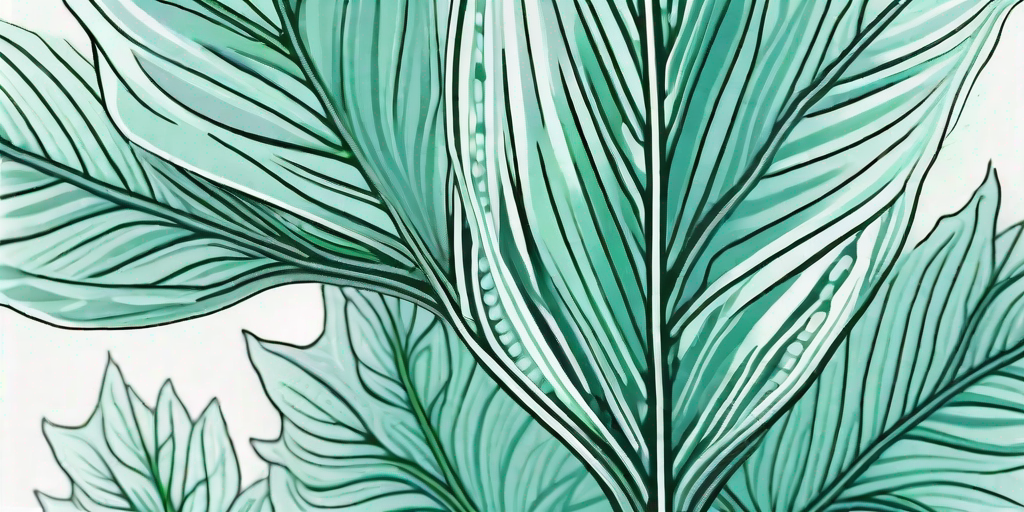
Welcome, green-thumbed enthusiasts and curious readers alike, to the world of False Aralia, a plant that's as mysterious as it is beautiful. This isn't your run-of-the-mill houseplant, oh no! This is a plant with personality, charm, and a few secrets up its leafy sleeves. So, buckle up, and let's dive deep into the verdant world of this captivating flora.
Understanding False Aralia
False Aralia, scientifically known as Plerandra elegantissima, is a bit of a misnomer. It's not false at all, it's as real as the soil it grows in. This plant, with its dark, slender leaves and elegant stature, is a true showstopper in any indoor garden. But don't be fooled by its delicate appearance, this plant is as hardy as they come.
Originally from New Caledonia, a tiny island in the Pacific, False Aralia is a tropical plant that loves a bit of humidity. It's like the diva of the plant world, always wanting a bit of misting and fussing over. But give it the right care, and it will reward you with its stunning beauty.
The Unique Appearance of False Aralia
One of the most striking features of False Aralia is its foliage. The leaves are long, slender, and serrated, giving the plant an almost feathery appearance. When the plant is young, the leaves have a coppery hue, but as it matures, they turn a deep, glossy green. It's like watching a plant go through its rebellious teenage phase, only to emerge as a sophisticated adult.
And let's not forget about the flowers. Although rare in indoor conditions, False Aralia can produce tiny, white flowers when it's really happy. These are followed by black or dark purple berries. But remember, these berries are not for human consumption. They're strictly for the birds, literally!
Caring for Your False Aralia
Now that we've got to know False Aralia a bit better, let's talk about how to keep it happy and healthy. After all, a happy plant is a beautiful plant. And who doesn't want a beautiful plant in their home?
Despite its exotic origins and sophisticated appearance, False Aralia is surprisingly easy to care for. It's like that friend who looks high-maintenance but is actually pretty chill. All it needs is the right amount of light, water, and a bit of TLC.
Light and Temperature
False Aralia loves bright, indirect light. It's not a fan of direct sunlight, which can scorch its delicate leaves. So, keep it near a window with filtered light, or in a well-lit room. It's not picky about temperature, but it does prefer a warmer climate. Try to keep the temperature above 60°F (15°C) to keep it comfortable.
And remember, no drafts! False Aralia is not a fan of sudden temperature changes. It's like that person who always carries a sweater, just in case the restaurant is too cold.
Water and Humidity
When it comes to watering, False Aralia likes its soil to be kept evenly moist. But be careful not to overwater it, as it doesn't like soggy roots. Think of it like a sponge cake, it should be moist, but not dripping wet.
As for humidity, remember that False Aralia is a tropical plant. It loves a bit of moisture in the air. So, give it a good misting every now and then, or keep it in a room with a humidifier. It will thank you with lush, healthy leaves.
FAQs About False Aralia
Now, let's tackle some of the most frequently asked questions about False Aralia. Because let's face it, we all have questions, and who better to answer them than a plant expert?
Is False Aralia Toxic?
False Aralia is not known to be toxic to humans or pets. However, it's always a good idea to keep plants out of reach of curious pets and children. And remember, those berries are for the birds, not for your salad!
Why Are the Leaves of My False Aralia Dropping?
Leaf drop can be a sign of stress in False Aralia. This could be due to overwatering, underwatering, or sudden changes in temperature or light conditions. So, if your plant is dropping leaves, check its environment and make sure it's getting the care it needs.
Can I Propagate False Aralia?
Yes, you can propagate False Aralia from stem cuttings. Just make sure to use a sharp, clean knife and cut just below a leaf node. Then, place the cutting in a pot with well-draining soil, keep it moist, and wait for roots to develop. It's like cloning, but for plants!
Conclusion
And there you have it, a comprehensive guide to the mysterious and beautiful False Aralia. This plant, with its unique appearance and easy care requirements, is a great addition to any indoor garden. So, why not give it a try? You might just find that it's the perfect plant for you.
Remember, the key to a happy plant is understanding its needs and providing the right care. So, keep this guide handy, and you'll be a False Aralia expert in no time. Happy planting!















